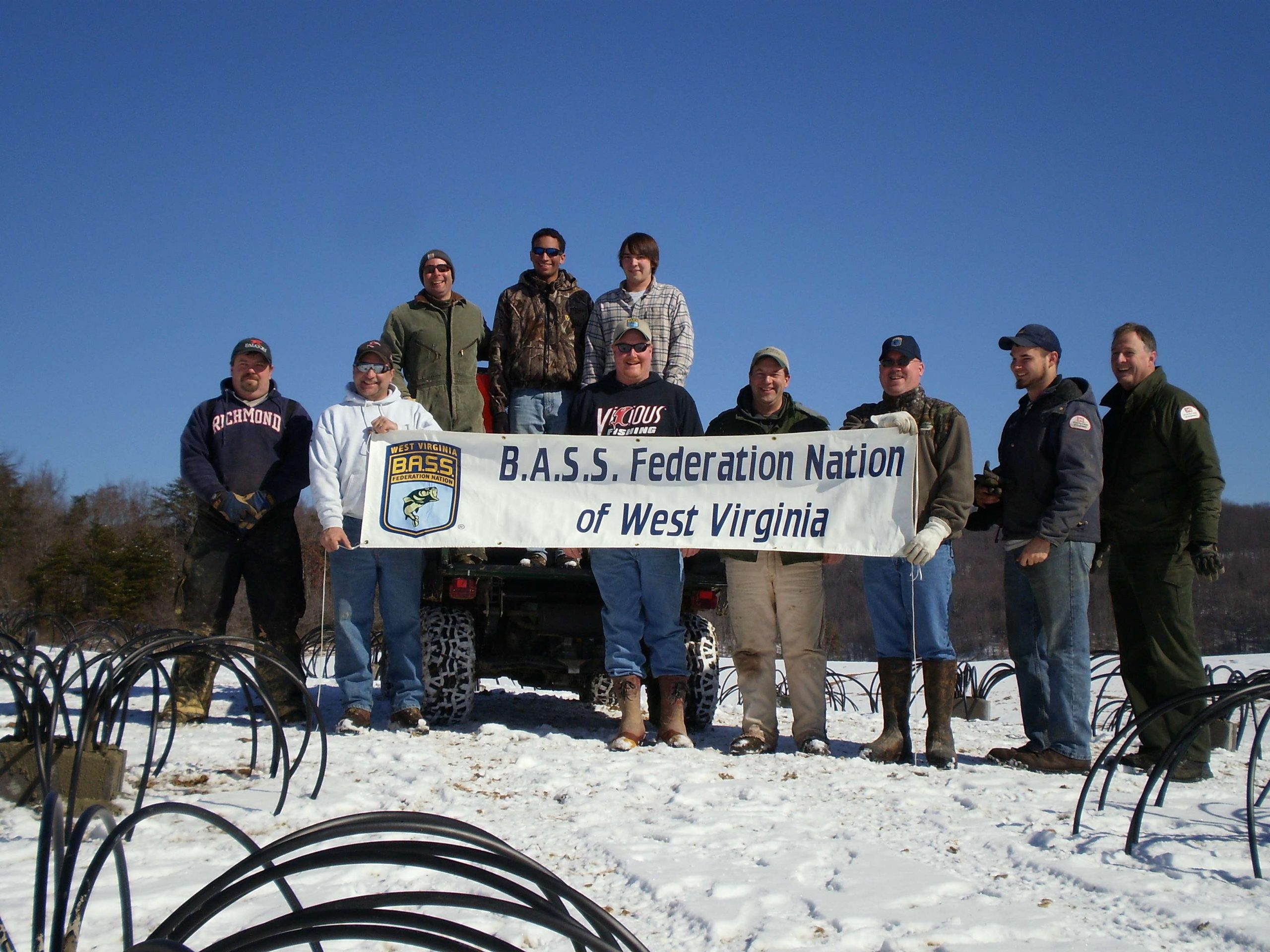
SUMMERSVILLE, W.Va. — The West Virginia B.A.S.S. Federation Nation (WVBFN) continued a spider-block habitat project at Burnsville Lake last winter and started another at Summersville Lake.
And as soon as funding is received from the National Fish and Wildlife Foundation, members will plant grasses at Sutton Lake.
Spider blocks are a way to “construct habitat in barren areas that promote natural development for the fish,” according to Jerod Harman, WVBFN conservation director.
Aside from providing a form of “artificial vegetation,” they also are low cost, easy to construct, long-lasting, and cause no harm to the aquatic environment, Harman said.
With approval and support from the Department of Natural Resources (DNR), the WVBFN put 50 spider blocks in Burnsville in early 2010. Those blocks “created a corridor of artificial habitat from the spawn area that ran out to the deeper river channel,” Harman explained.
Fisheries biologists then monitored the area, finding that “the blocks did exactly what we were expecting,” he said. “Also, they served as excellent fish attractors in the warmer months.”
That success prompted the Federation Nation to put more spider blocks into Burnsville early in 2011, as well as place 50 of them in Summersville.
“The Summersville project was instrumental in developing a good working relationship between the Federation Nation members, the WVDNR and the Corps of Engineers,” Harman said.
“We found our common ground, that we are all concerned about conservation and habitat improvement. It was fantastic to see all of us working together, and through our efforts, we completed an impressive project in three hours, despite morning temperatures hovering at the zero mark!”
At Burnsville, volunteers first installed an additional 50 blocks, by blending them into the previous planting near the spawning area, and staying adjacent to the shoreline for several hundred feet. They then moved across the lake and began a test plot with 11 blocks, before dropping 65 pine trees above the original site.
“These trees will provide cover in the deeper water closer to the channel, thus increasing the chance of survival for young bass after they move away from the bed,” Harman said.
Much of the material for the spider blocks was donated, he explained, while the rest was purchased at discount rates, using donations from WVBFN members. Cooperating companies included Central Supply, J.F. Allen Corp., Flying “W” Plastics, Rite Way Heating and Plumbing, and Boxley Aggregate, Block and Concrete.
This article is part of the Habitat Improvement segment of the larger report, 2011 Annual Achievements in B.A.S.S. Conservation.

